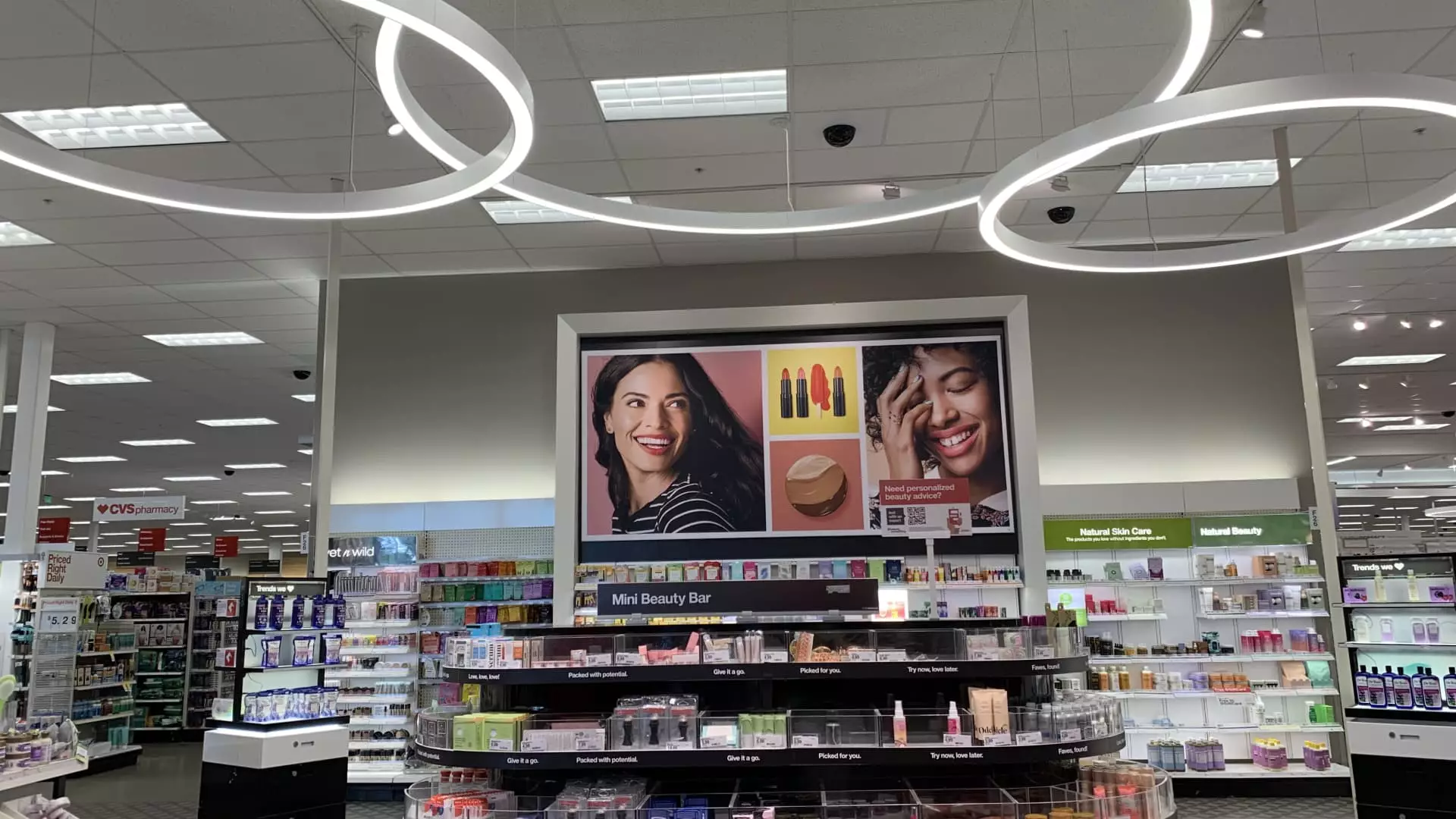In a move that signals shifting sands within American retail, Target’s decision to sever its partnership with Ulta Beauty marks a pivotal moment. What was once heralded as a transformative approach to reinvigorate shopping experiences now faces the bitter reality of change. This split, set to finalize in 2026, is a clear indicator that even strategic alliances between retail giants are not immune to internal struggles and market pressures. For Target, a company striving to reclaim its footing amid stagnation, losing Ulta’s shops appears as a blow, but perhaps also a catalyst for reevaluation.
The collaboration, launched to bring the allure of Ulta’s beauty offerings directly into Target’s expansive footprint, was intended to be a win-win. Yet, beneath the surface, it underscored the challenges of integrating two distinct retail cultures — a battle of operational efficiency, brand identity, and customer experience. As Target integrated over 600 Ulta-branded mini-stores across nearly a third of its locations, it seemed like a bold step toward differentiation. However, this move revealed deeper issues about execution, staffing, and customer engagement in a hyper-competitive market.
What Losing Ulta Means for Target’s Future Strategy
The immediate aftermath of this split is a dip in shareholder confidence. Target’s stock has slipped, reflecting broader concerns about its ability to innovate and attract consumers who are more discerning and less loyal than ever. In an environment where physical retail is under intense pressure from e-commerce and experiential shopping platforms, the removal of Ulta’s vibrant beauty shops feels like a setback — a missed opportunity to leverage high-margin, trend-driven categories.
Yet, rather than despair, this could be a moment for self-critique and strategic recalibration. Target had heavily promoted Ulta as a key pillar of its growth story, even citing a “nearly 7%” sales increase in the beauty category as proof of concept. Now, without these dedicated shops, the retailer must find alternative avenues to boost store traffic and revitalize its brand image. It also raises questions about the sustainability of relying on third-party brand integrations that, while seemingly promising, might not withstand the realities of retail operational challenges.
From a leadership perspective, the departure of CEO Brian Cornell signals another layer of uncertainty. Leadership transitions often serve as points for reflection, and perhaps, a recognition that radical partnerships require a level of control and adaptability that Target’s current management may not have mastered. The broader retail environment is ripe with disruption, and this split could serve as a moment of reckoning for Target’s future course.
Strategic Implications and the Broader Market Context
The Ulta-Target breakup is not purely about one partnership; it is emblematic of the turbulence within the retail sector at large. Retail theft, staffing shortages, and operational inefficiencies have plagued big-box stores, dragging down profitability and consumer satisfaction. The fact that Target’s leadership emphasized “messy in-store operations” as a contributing factor signals a deeper malaise that cannot be masked by superficial brand collaborations.
Ulta’s bold statements about “executing plans” and “reinforcing leadership” reflect a resilient brand despite external challenges. However, it raises a critical question: can Ulta, or similar beauty retailers, sustain growth within the confines of a changing retail landscape? The allure of in-store experiences is undeniable, but only if executed seamlessly and supported by solid operational foundations.
For the retail industry, this breakup underscores the necessity of agility and sincerity. Alliances or not, brands must prioritize authentic engagement and operational excellence. Otherwise, they risk fragmenting consumer trust and losing relevance in a marketplace where information and options are abundant. The future for Target isn’t bleak, but it demands a more nuanced approach—balancing innovation with operational discipline, and collaboration with strategic independence.
Ultimately, the dissolution of this partnership serves as a sobering reminder: in retail, success hinges on more than trendy collaborations or gimmicky in-store gimmicks. It requires adaptability, operational mastery, and a keen understanding of evolving consumer demands. The road ahead for Target may be fraught with setbacks, but it also offers an invaluable opportunity to shed overextended strategies and rebuild on more resilient, consumer-centric foundations.

